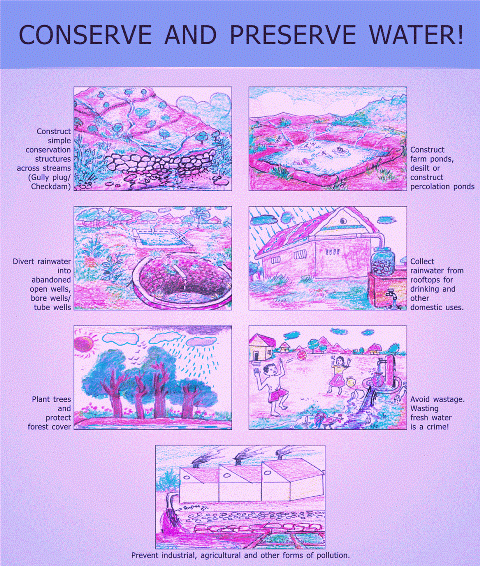Source: http://www.hindu.com/2007/12/25/stories/2007122555430700.htm
Aarti Dhar
NEW DELHI: There was a deficit of 8,000 girls annually in Tamil Nadu in 2002 with a pre-birth shortfall accounting for 68 per cent. This is a decline from the annual deficit of 11,000 daughters reported in 1996-99 when the pre-birth deficit accounted for 60 per cent. The decline in the number of ‘missing girls’ in 2002 was driven by the sharp reduction in post-birth shortage.
According to a study “Declining Daughter Deficits in Tamil Nadu, India?” conducted by Arjun Singh Bedi and Sharada Srinivasan of the Institute of Social Sciences at The Haugue, the post-birth daughter deficit declined spectacularly in Salem and Dharmapuri, accounting for 87 per cent of the reduction.
The decline appears to be durable as the differential between estimated and expected female infant mortality rate (FIMR) based on Sample Registration System (SRS) data collected in 2004 is in the same range as in 2002. There has been no evidence of increases in pre-birth daughter deficit during this period, the survey points out attributing the decline to a number of measures taken by the State Government for the protection of girl child.
Given the range of interventions including Cradle Baby Scheme (CBS) and Girl Child Protection Scheme (GCPS), we cannot draw a casual link between a specific intervention and reduction. However, it does seem that the various interventions have led to a sharp reduction in pre-birth daughter deficit, the survey suggests while pointing out that relying on these two schemes is not enough and tackling the deficit required a broader coalition which brings together government pressure, administrative zeal and participation of self-help groups and non-governmental organisations.
Daughter elimination
Daughter elimination in Tamil Nadu came to light in 1985-86 in the form of female infanticide among the Kallar community of Maduri. About 6,000 female babies were reportedly poisoned between 1975 and 1985.
But then it was thought to be limited to a geographical area and certain socio-economic groups. However, in 1992 and 1993, female infanticide was reported among Gounders, a relatively wealthy group in Salem and Vellore. By 1997, female infanticide was reported from 8 districts and 35 self-ascribed caste groups.
As far as the Infant Mortality Rate is concerned, Salem and Dharmapuri have also experienced sharp declines in the gap between estimated and expected female infant mortality rates with the figure declining from 82 to 17 per 1,000 live births in Salem and 66 to 13 in Dharmapuri.
The 0-6 sex ratio in Tamil Nadu in 2001 was 942 as compared to the national average of 933, though it was a decline from 948 in 1991.
Aarti Dhar
NEW DELHI: There was a deficit of 8,000 girls annually in Tamil Nadu in 2002 with a pre-birth shortfall accounting for 68 per cent. This is a decline from the annual deficit of 11,000 daughters reported in 1996-99 when the pre-birth deficit accounted for 60 per cent. The decline in the number of ‘missing girls’ in 2002 was driven by the sharp reduction in post-birth shortage.
According to a study “Declining Daughter Deficits in Tamil Nadu, India?” conducted by Arjun Singh Bedi and Sharada Srinivasan of the Institute of Social Sciences at The Haugue, the post-birth daughter deficit declined spectacularly in Salem and Dharmapuri, accounting for 87 per cent of the reduction.
The decline appears to be durable as the differential between estimated and expected female infant mortality rate (FIMR) based on Sample Registration System (SRS) data collected in 2004 is in the same range as in 2002. There has been no evidence of increases in pre-birth daughter deficit during this period, the survey points out attributing the decline to a number of measures taken by the State Government for the protection of girl child.
Given the range of interventions including Cradle Baby Scheme (CBS) and Girl Child Protection Scheme (GCPS), we cannot draw a casual link between a specific intervention and reduction. However, it does seem that the various interventions have led to a sharp reduction in pre-birth daughter deficit, the survey suggests while pointing out that relying on these two schemes is not enough and tackling the deficit required a broader coalition which brings together government pressure, administrative zeal and participation of self-help groups and non-governmental organisations.
Daughter elimination
Daughter elimination in Tamil Nadu came to light in 1985-86 in the form of female infanticide among the Kallar community of Maduri. About 6,000 female babies were reportedly poisoned between 1975 and 1985.
But then it was thought to be limited to a geographical area and certain socio-economic groups. However, in 1992 and 1993, female infanticide was reported among Gounders, a relatively wealthy group in Salem and Vellore. By 1997, female infanticide was reported from 8 districts and 35 self-ascribed caste groups.
As far as the Infant Mortality Rate is concerned, Salem and Dharmapuri have also experienced sharp declines in the gap between estimated and expected female infant mortality rates with the figure declining from 82 to 17 per 1,000 live births in Salem and 66 to 13 in Dharmapuri.
The 0-6 sex ratio in Tamil Nadu in 2001 was 942 as compared to the national average of 933, though it was a decline from 948 in 1991.






